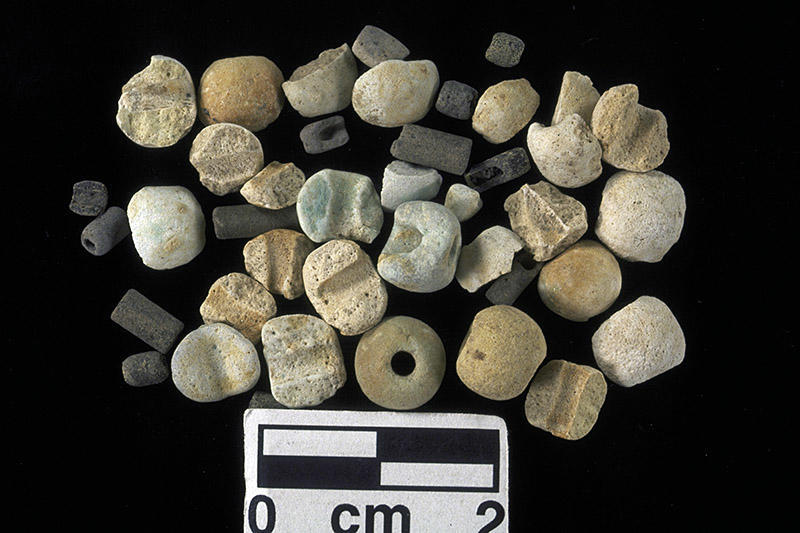"There was a frequent use of new, artificial materials during the Indus Integration Era, or Mature Harappan period (ca. 2600-1900 B.C.E.)," writes Heather Miller. "Looking more broadly, this seems a characteristic not only of the Indus, but of many of the Western Asian civilizations of the third and second millennia. It has been suggested for various periods that an increased use of artificial materials was tied to a widening demand for status or luxury goods, with the development of a middle-level elite, a bureaucracy, or a wealthy urban class (e.g. McCray 1998; Moorey 1994: 169; Vidale 2000; Vidale & Miller 2000). These new materials could be employed to create status symbols for such a middle-level class, allowing an extended hierarchy of status in increasingly complex ranked societies." (p. 145)
Miller uses her passion for detail (which she traces to Elizabeth During Caspers' "fine focus to reveal large social issues") to examine the assumptions contained in the paragraph above, and to peel away at the presumed context and role of what are usually small steatite and faience products in Indus times to determine what we can assume and presume about the role of these goods in social and economic structures. "It is likely, then, that sintered [coalescing a powdered material into a solid or porous mass by means of heating without liquefaction] talcose and siliceous materials were primarily of use in displaying social information, including status differentiation . . .. Furthermore, there are some unusual aspects of Indus luxury materials in comparison to the other early civilizations of Western Asia, including the relative absence of lapis and the prevalence of talc/steatite. . .. With closer study, there are a number of reasons why the development of artificial materials for ‘luxury’ items may have been encouraged in the Indus" (p. 145).
The rich analysis that follows engages with a host of archaeological issues, discusses the idea of imitating higher value, natural goods like gemstones or stone bangles with less expensive, intensely manufactured materials in greater volumes that may have been popular among non-elite classes. A very helpful grid contrasts access to raw materials with "degree of technological elaboration," a relationship that helps situate beads in particular with the effort in designing and manufacturing them with different materials. The discussion also confronts some of the mysteries of Indus society, like the glaring absence of lapis lazuli – so highly prized elsewhere and likely exported from – Indus cities. There is a detailed discussion of color and glazes, and how specific tastes, possibly unique to Indus people, may have helped determined the crafts that were produced.
"Overall, I found throughout my studies of Indus pyrotechnologies that Indus craftspeople were extremely technologically innovative in the creation of new materials," writes Miller (p. 153). The reader too comes away with a a deeper appreciation of these innovations and what they may tell us about the society that spawned them without resorting to simplifications. "For the Indus we have to question all of our usual assumptions about what people valued, and thus what types of objects were ‘elite’ or ‘valuable’" (p. 155), writes Miller, a task she manages admirably in a paper full of insight for scholar and enthusiast alike.
Image: Broken faience beads from Harappa. Many broken and some complete faience beads of different colors were recovered in the eroded surface layers of the slope on the south side of Trench 54.

